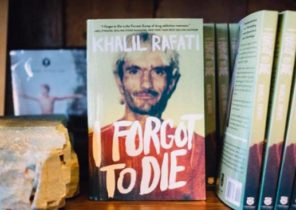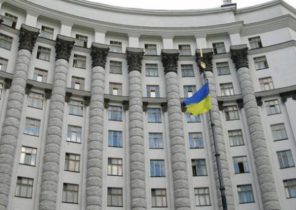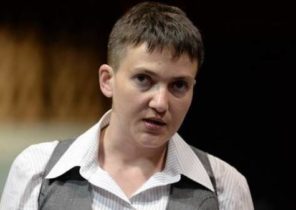During the Second world war the Germans burned with their inhabitants hundreds of Ukrainian villages. Those who managed to escape from the fire trap, shot and finished off with rifle butts.
“The peaceful population is not always thought…”
Not yet subsided volleys of the Second world war, as the whole world learned about the tragedy of the Belarusian village of Khatyn, which in March 1943 was burned by the German invaders. Then killed 149 residents, including 75 children.
Long known world and the fate of Czech and French of the villages of Lidice and Oradour-Sur-Glane, which also — with a few hundred residents — suffered a similar fate. But today, on the 75th year after the Victory over German Nazism, even in Ukraine, not all know that the Nazis let the smoke of hundreds of settlements, doomed to a painful death dozens of thousands of their inhabitants, More than anything, so it was destroyed settlements in Zhytomyr oblast — 112, the least — in the Lviv region — 1.
In the days of the Soviet Empire, the official version of destruction in such a barbaric way villages and people were “bestial cruelty of the Nazis, genocidal policy elite of the Third Reich and the courage of the Soviet people, who helped the enemy desperate resistance.” Is it possible to disagree with this statement? Of course not. But…
For decades strongly suppressed by other factors, which provoked the Nazis to such violence. One of them is a guerrilla and sabotage groups formed from the first days of the war the NKVD and was left behind to fight the occupiers: there were, according to incomplete statistics, more than half a thousand, and their number amounted to almost 35 thousand people!
Over time, their number has increased significantly, as increased and the territory in which they operated. During Soviet times, their activities are strongly heroes, and the extent of the damage done to an enemy artificially inflated. First of all by the leaders of the guerrilla troops, who after the war settled down writing his memoirs-memories.
Of course, to fight the enemy, who from the first days of the war showed its brutal face, it was necessary. And most of them are partisans, and it did, for what they honor and praise. However, there were other occasions when his ill-considered and deliberate actions, they provoked the Germans to even greater cruelty. As recalled in the late 50-ies of the legendary Sidor Kovpak, their actions “were not always thought out, were not always taken into account the interests of the civilian population.” Moreover, Sidor Artemovich admitted that Moscow required not to reckon with these interests, they say, if after your stock will suffer local population, it will only cause him rage to the Nazis. Is it because the most affected villages of Zhytomyr, Chernihiv, Sumy region — the most densely wooded regions, where it was most developed guerrilla movement?..
On 4 November 1941 in the village of Baranovka arrived to sleep 6 soldiers of the Wehrmacht. If you currently have documents intended to command the land forces. This was recognized guerrillas, in the night of 5 November attacked the house where they were sitting. With 4 Germans killed, seizing documents. But the next village was surrounded by two German battalions. Soldiers rounded up people in the center of the village, claiming to give the forwards. But the “people’s Avengers” in advance left the village. So enraged the Nazis shot 10 hostages and burned the village, founded in the first half of the XVII century. The question arises: was it necessary to kill 4 Germans, thus signing a death sentence to the Ukrainian peasants?
It was not an isolated case. In the spring of 1942 in the forests of Volhynia formed a band of guerrilla fighters, which included former party and Soviet officials, security officers who do not have time to evacuate. And began to make a “retaliation”, attacking mainly on the police. So, they attacked a police station in the village of Kortelisy, where 11 of Hitler’s henchmen. They, of course, destroyed, proudly announcing to the villagers that “this fate will befall all who will serve the enemy.” Soon the village became the capital of the partisan, as he called it one of the guerrilla leaders in his postwar memoirs. But “forgot” to mention what a tragedy it led to: 22 September 1942 Kortelisy and nearby hamlets was surrounded by the Nazis, who began to expel residents from their homes, driving to the village centre. Those peasants whose relatives served in the auxiliary police or cooperated with the German authorities, was sent to the nearest village. And the rest were driven to school and Church and immediately set them on fire. People tried to escape from the fire but fell under the German bullets. During the day in Kortelisy and the surrounding farms were burned alive or shot about 3 thousand people!..
“Killed in the yards and huts of their own, shot straight into the Church…”
The vast majority of residents of the burned villages were killed in the fire a Martyr’s death. But some were lucky to survive. Maria Salonico, a resident of the Polesie village of Kozary is one of them. After the war she recalled the lived nightmare:
“We got up early. The yard was barely dawn. My oldest daughter, a tenth grader who came out of the house for water. A minute later I hear screaming, thumping. Rushed into the passage. The executioners finish off the butts Gennuso. I screamed wildly, and gunfire stabbed in the chest… when I came to myself, saw the lie in his hut, the pile of corpses, in the blood of their children: Gannusi, Olenki, Evdokia, Grisha. In the cradle killed my grandson and his mother, my daughter-in-law Mary.
Into the house ran the policemen emptied the wardrobe, drawers, dragged over the threshold, the nodes with our things, then he poured kerosene and set alight. And I have no strength to rise. The flames quickly engulfed all around. Miserably burst, and the crumbled window glass. I started to choke… don’t remember how I crawled out to the street. The fresh air added a bit of power. Looked back. Burned and collapsed house next door, heard terrible cries, stamping of feet, shooting. I almost crawled to the potato hut, fell into the icy water, lost consciousness… for Three days I lay in the icy water. Then those who were saved, found me out…”.
The villagers killed Mary in the yards and huts of their own, shot straight into the Church, where the villagers tried to find salvation, burned herded into wooden sheds. By the evening of 11 March 1943 destroyed about 5 thousand inhabitants of the village, of which more than thousand children.
But the memories of Anatoly Violin — another witness of the tragedy:
“I was 16 years old when the Nazis burst in. They drove up to our house by car and immediately started shooting. We managed to jump out of the house and started to run. The Germans fired at us from machine guns. Survivor slid into a ditch and crawled to the nearest house. There we crawled to the basement, where there sat a women, elderly, children. Hear in the yard drove the car. The Germans surrounded the basement and ordered to go. We left. We were lined up and began firing a machine gun. My mother ran away. The bullet caught me, and I was shot in the leg, fell. The mother, wounded in the chest, fell on me. The Nazis finished off my mom with a gun. I lost consciousness. And when he came to himself, reappeared in the basement. There sat Nikita Stelmach and some woman with the boy in her arms. She got scared of me and ran out into the yard. A woman with a baby climbed on the roof of the shed, and Stelmach, seeing his wife and two young children dead, screamed. The Nazis returned. Stelmach ran at him and grabbed the assassin by the throat. The cry ran to the other Nazis shot him, burned the house, barn and gave all of the machine in the basement. But I did not get. I saw in the fire was beating a woman with a child. She wrapped the boy up and threw him into the snow. The Nazis caught him on a bayonet and thrown into the fire. The mother screamed like crazy and ran for the child in fire.”
Between two fires
Among the occupants were more or less sober people. For example, one of the officials of the administration of reichskomissar of Ukraine Erich Koch Heinz von Homeyer 15 October 1943, sent to Minister A. Rosenberg letter. In it, in particular, it was said:
“Ruling the country, must have a positive attitude toward it, to strive for understanding and compassion, and not deny them… I can’t expect that I will fight someone I as a reward I promise slavery. You can not with impunity to deprive the remnants of the human dignity of even the most miserable of people. This truth of human nature, and not evidence of Slavic inferiority. I often asked my co-workers, how would we in the case if Germany similarly was ruled by another state, as we do in Ukraine? The answer was always the same: we all become partisans! (…) We can’t turn to blacks, 40 million people, which by nature have a white skin. We, as ardent enemies of Bolshevism in Europe cannot impose slavery.”
However, the top leadership of Nazi Germany, which practiced the scorched earth policy, such statements are not listened to. Not surprisingly, the victims of Nazi punitive operations, during which they burnt villages were almost 50 thousand rural residents. More than 70 percent of them children, women and the elderly.
But it is fair to say that your “contribution” to the burning down of villages has made the Soviet partisans. His ill-considered and deliberate provocative actions, they once again pushed the Nazis to conduct punitive actions. And our villagers 2-3 dead Nazi soldiers paid the lives of hundreds, or even thousands private.







